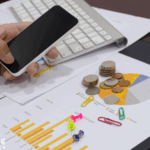AgriDex has introduced its new product, Loam, a USD-backed stablecoin payment rail designed to address inefficiencies in the agricultural trade market. This initiative comes at a time when digital finance solutions are increasingly critical to secure faster and less expensive international transactions. Unique data points emerging from various regions indicate that such solutions can offer tangible benefits, reshaping traditional trade practices while minimizing reliance on outdated systems.
Multiple sources note that global agriculture, while a cornerstone of the $2.7 trillion industry, has been burdened by delays and high transaction fees. Reports from various outlets highlight that digital payment infrastructures are slowly making inroads. Information from alternative platforms confirms that AgriDex’s focus on vetting exporters and aligning with existing regulatory protocols distinguishes Loam from other digital finance solutions.
Can digital stablecoins simplify agricultural trade payments?
Loam leverages smart contract technology under English company law to improve payment transparency and shorten settlement periods.
“There is a huge amount of friction in global trade, especially in emerging parts of the world,”
stated AgriDex CEO Henry Duckworth. The product offers a web-based platform that allows exporters to manage invoices and transactions using only a smartphone and an internet connection.
Will digital tools improve liquidity access for global exporters?
The initiative aims to provide practical tools for established farmers and producers already integrated with banks and regulatory bodies.
“We’re not starting from scratch. These are established farmers and producers who already work with banks, buyers and regulators. They’ve cleared the major licensing hurdles. We are just giving them better tools.”
This mechanism not only diminishes reliance on traditional banking methods but also offers competitive forex arbitrage opportunities in regions like South Africa.
Loam also targets the wider blockchain ecosystem. The solution is designed to meet immediate payment challenges while preparing for future credit advances via on-chain finance.
“Instead of going to a local bank to spend a lot of money turning your local cash into a U.S. dollar, you can jump over that by simply logging onto Loam, uploading your documentation, passing your KYB and engaging with your end traders,”
Duckworth noted, highlighting the system’s ease of use.
Duckworth further explained the role of digital technology in enhancing trade fluidity for cautious users.
“We often work with older farmers who are naturally cautious, and we tell them, ‘Just test it with a smaller trade flow and a buyer you already know,'”
he added, pointing toward the gradual adoption process that builds trust.
Market trends indicate that a multi-currency future may reduce the dominance of established currencies like the U.S. dollar. Duckworth mentioned Europe’s potential leadership in digital currency initiatives as a factor that could drive adoption.
The strategy behind Loam demonstrates a deliberate effort to modernize payment systems without overhauling existing regulatory frameworks. Its step-by-step integration emphasizes practical benefits for users in underbanked areas, offering insights into reconciling traditional finance with digital processes.










